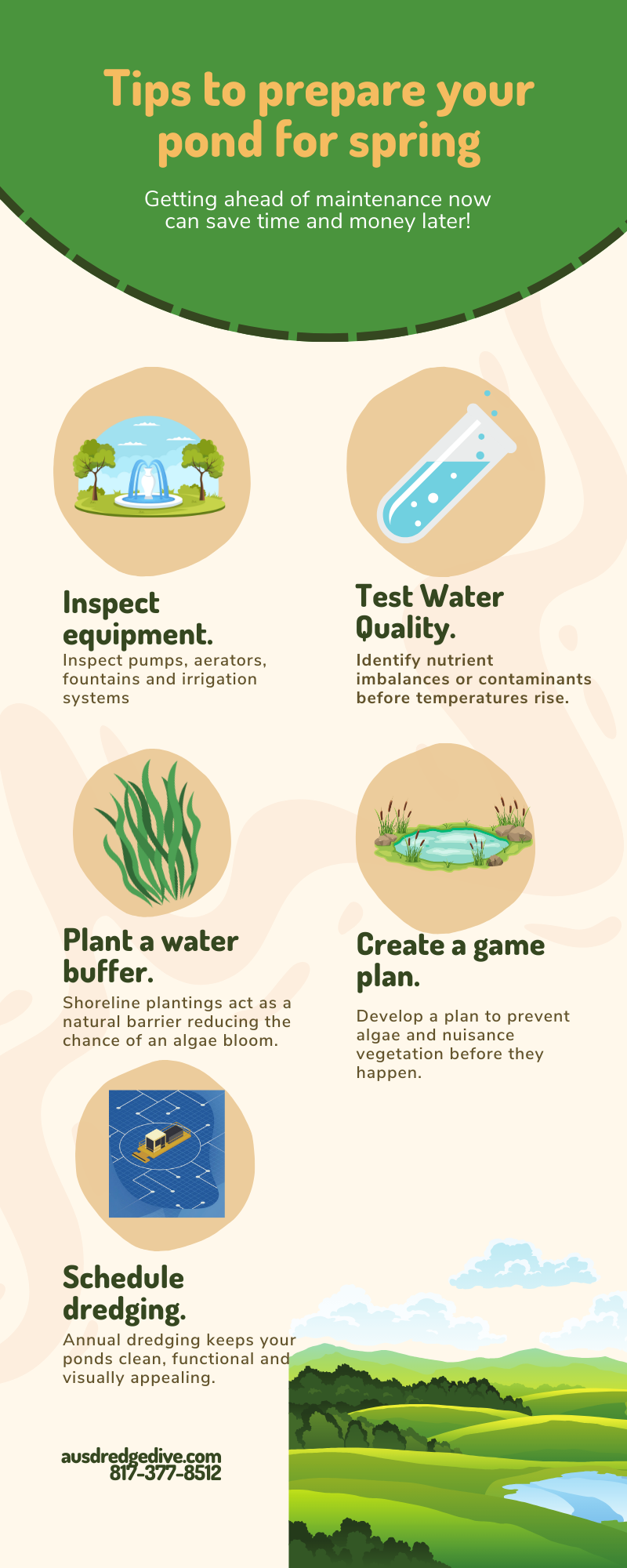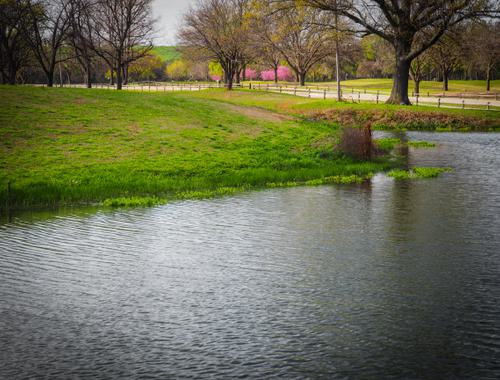5 Pre-Season Tips for Golf Course Ponds - Spring 2025
As spring 2025 approaches, golf course superintendents have just a few months to prepare for the season. Among the many pre-opening tasks, pond maintenance remains a top priority. Warmer temperatures will soon melt any remaining ice on your ponds, and getting ahead of maintenance now can save time and money later. Here are five essential tips to help jump-start your golf course pond maintenance this season.
Tip #1: Equipment Inspection
Spring is an ideal time to audit all the mechanical equipment associated with your ponds and lakes. Pumps, aerators, fountains, and irrigation systems should be thoroughly inspected for wear and tear. Addressing issues early avoids delays caused by long lead times for replacement parts in your aquatic systems. If a critical component is needed for your aeration system, consider ordering an extra to keep as a backup.
For courses that use ponds as irrigation reservoirs, clogged intakes can lead to costly repairs. Inspect and clean the intake systems and irrigation lines to prevent damage and ensure a seamless start to the season.
Tip #2: Test Water Quality
Maintaining balanced water chemistry in your aquatic systems is crucial to avoiding nuisance algae and plant growth. Testing the water early can help identify nutrient imbalances or contaminants before temperatures rise. A day or two of unseasonably warm weather can trigger algae blooms, so proactive measures like water testing and treatment are essential.
Addressing water quality issues now ensures your ponds and lakes are ready to support the golf course's irrigation and aesthetic needs throughout the season.
Tip #3: Plant a Water Buffer
If you don’t already have a water buffer, now is the perfect time to establish one. Shoreline plantings act as a natural barrier, absorbing excess nutrients from runoff and reducing the likelihood of algae blooms in your water features.
A well-designed buffer should extend 3-6 feet from the water’s edge and include plants like duck potato, arrow arum, and pickerelweed. These native plants help stabilize shorelines, prevent erosion during spring rains, and enhance the appearance of ponds and lakes while attracting beneficial wildlife.
Tip #4: Create a Nuisance Algae and Vegetation Game Plan
“An ounce of prevention is worth a pound of cure” applies to pond and lake management. Proactive golf course managers develop a plan to prevent algae and nuisance vegetation before they take hold. Regularly monitoring nutrient levels, scheduling dredging, and addressing small issues before they escalate can save time and money.
Implementing preventative measures early also ensures your golf course waterbodies remain free of clogs, allowing staff to focus on other aspects of course maintenance.
Tip #5: Schedule Dredging
Dredging is one of the most effective ways to prevent nuisance algae outbreaks and maintain pond health. By removing nutrient-rich organic sediment from the pond bottom, you reduce the food source for algae and unwanted vegetation. Additionally, the removed material can be repurposed around the golf course for landscaping projects, such as enriching flower beds or revitalizing struggling turf areas.
Annual dredging keeps your ponds and lakes clean, functional, and visually appealing throughout the golf season.
Golf Course Pond Dredging Services
At AUS Dredge and Dive, we specialize in maintaining pristine golf course ponds. Our advanced dredging equipment ensures that your ponds and lakes are free of nutrient-rich sediment, minimizing the risk of algae outbreaks and improving water quality.
Let us help you prepare for the 2025 golf season with efficient lake management strategies. Call us at (817) 377-8512 to learn more about how AUS Dredge and Dive can save you time and money with our dredging services.






